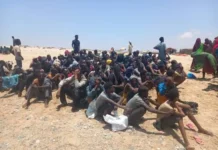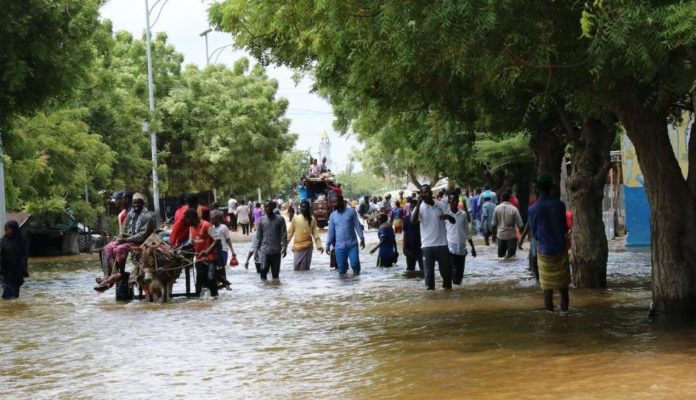Several thousand people in the worst-affected area of Baladweeyne are sheltering under trees or in emergency tents after their makeshift homes were washed away by floods caused by torrential rain. The Norwegian Refugee Council (NRC) is calling for an urgent humanitarian response to ensure aid can be provided safely to people in desperate need.
“Floods have destroyed more than three quarters of Baladweeyne and submerged many surrounding villages. These are extremely poor parts of Somalia, where there is now no electricity and no safe drinking water. Livestock has been lost and agricultural production has been decimated. Our team is extremely worried about at least 30,000 vulnerable families displaced by flash flooding in Bardaale, further south. These communities will need immediate response to survive and long-term support to recover,” said Victor Moses, Country Director for NRC in Somalia.
According to figures by the UNHCR and NRC-led Protection Returns and Monitoring Network (PRMN), 273,000 people have been displaced by flooding in October alone, the vast majority in the Baladweeyne area due to the flooding of the Shabelle river. This brings the total number of people displaced by a combination of drought, floods and conflict so far this year in Somalia to 575,000*.
“The country is already ravaged by drought, which has contributed to the displacement of around thousands of people so far this year. Vulnerable communities become more dependent on humanitarian aid and find it harder to recover,” Moses said.
Displaced people, particularly children, mothers and the elderly are now facing serious hunger, health and protection risks in an area already receiving little to no humanitarian assistance due to insecurity and conflict. According to NRC staff on the ground, they are in desperate need of food, water, emergency shelter, health, and sanitation/latrines and mosquito nets.
“Food reserves have been destroyed, food markets are under threat and displaced people, particularly children, mothers and the elderly are at a high risk of hunger and illness. Water-borne diseases such as cholera could erupt and spread quickly. Stagnant waters are a breeding ground for mosquitoes and could result in a malaria outbreak,” added Moses.
“Baladweeyne and the entire Hiraan region have not received sufficient humanitarian support due to ongoing security risks and the prevalence of armed actors in the area. This is already an extremely vulnerable community and we could see huge suffering and potential loss of life, if rain continues to fall and aid isn’t received in time. A coordinated, multi-sectoral humanitarian response is urgently needed to support thousands of people.”
Furthermore, heavy rain is forecast across parts of Somalia while more flooding along the Shabelle and Juba rivers is expected over the coming weeks. The Puntland, Somaliland and Central regions are bracing themselves for a tropical storm, which is set to make landfall within the next 72 hours.







































